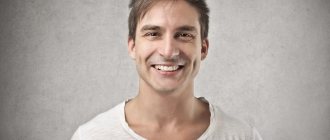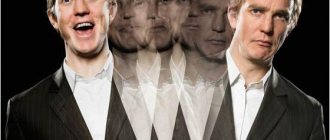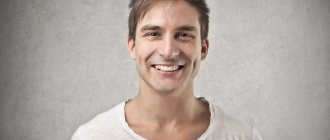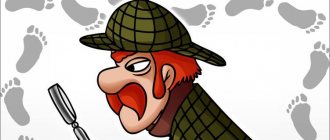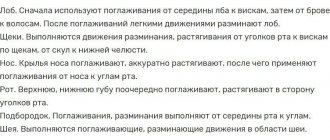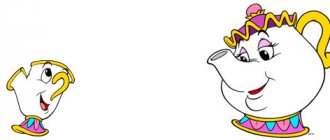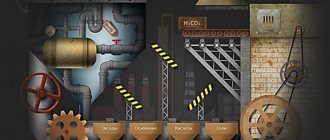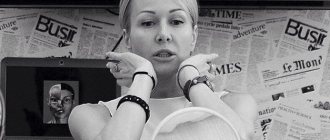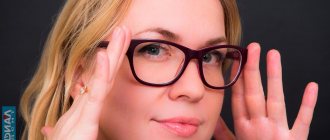Every aspiring actor dreams of immediately going on stage in a serious role and performing to the sound of applause. But dreaming, unfortunately, is not enough; stage triumph begins long before receiving a role and not with a reading of the play, but with painstaking and hard work. After all, talent is 99% hard work and only 1% divine spark.
Of course, no matter how much you work, you still won’t get one hundred percent without one percent, but you won’t get far with just one percent. To shine on stage and in films, you need to clearly understand from the very beginning what acting is.
Where it all begins
So as not to hear the famous “I don’t believe it!” at the first performance. Stanislavsky, a young man or girl who sets out on the thorny path of life in creativity will have to work a lot on himself. In acting, not only true experiences are important, but also how the actor expresses them. After all, you can feel everything at least ten times, be at the breaking point, but the viewer will see nothing but sluggish movements and incomprehensible, weak facial expressions. To convey a thought or emotion to the viewer, you need to have an expressive acting apparatus, that is, a body and face.
The first exercise for a beginning actor, chess player or musician will naturally be the easiest. But only after achieving perfect execution can you proceed to the next task.
In many educational institutions that train young talents according to the Stanislavsky system, acting classes begin with taking a chair to the stage. This assignment often causes confusion among students, because they want to become actors, not stagehands! But only after achieving ease and accuracy in such a simple (at first glance) exercise can you move on. You always have to start somewhere, and bringing out a chair is the first step onto the stage.
How to correct facial habits that age our face?
How to correct facial habits that age our face?
So, in the article “Causes of Facial Aging” link we figured out which enemies of the youth of our face we can easily defeat.
Today we’ll talk about the main and most terrible enemy - Mimic habits.
Most of the wrinkles on our face are facial wrinkles, that is, they are formed as a result of regular wrinkling of the skin and spasming of muscles in the same places.
Some wrinkles are very difficult to avoid, such as crow's feet, because to do this we would have to stop smiling and never squint our eyes in the sun.
But the most noticeable wrinkles and facial deformations can still be avoided by changing facial habits.
Watch how people wrinkle their faces for a week
who think no one is looking at them. What do they do when they are nervous, doing stressful work on the computer, taking exams, or angry? Wrinkling their forehead and moving their eyebrows? Are they pursing their lips? Raise their eyebrows? Are your eyes squinting? Nostrils flaring? If you purposefully observe this, you can be amazed at how much and how ugly most people make faces, and absolutely unconsciously!
Now pay attention to yourself
: Which muscles do you tense most often? What part of your face do you wrinkle when you are worried, angry, focused, offended, or how you talk? You need to observe yourself for at least two days, catching the slightest tension in any area of your face, otherwise it’s best to record how you articulate when you speak. Now look carefully in the mirror. What is the influence of your facial habits on your face? Keep track of what constant facial action caused this or that wrinkle. Isn't the formation of wrinkles, nasolabial folds, jowls, and bumps above the eyebrows related to those facial habits that can be completely corrected?
How to fix?
Monitor correct posture and facial expressions, replace bad facial habits with correct ones, and relax muscles immediately after overexertion. Eliminate tension in the muscles and learn not to create them anymore.
Let me give you an example.
Since childhood, I had the habit of raising my eyebrows (inherited from my mother), so the transverse wrinkle on my forehead was noticeable from the age of 12, and by the age of 25 it was already quite deep. In addition, in my youth, I very often relaxed my cheeks and cheekbones, rarely smiled and often, for any reason, made an “unhappy face.” As a result, by the age of 25, the lower part of my face had noticeably sagged, the corners of my lips “crept” down, and it seemed that I had some kind of jowls. The effect was reinforced by the malocclusion and the habit of constantly pursing the lips and clenching the jaw. The girl in the photo below has an expression on her face that I often made in my youth:
Only after I realized this, I began to control my facial expressions throughout the day (I don’t allow my forehead to wrinkle, I constantly relax it and massage it after I accidentally wrinkle it, I don’t purse my lips and don’t clench my jaw as before, and I have the habit of lowering the corners of my mouth I replaced it with the habit of sometimes mentally pulling up the zygomatic and temporal muscles). This has brought results: now, at 30 years old, the wrinkle on the forehead is much less pronounced than at 25 years old, and the “sagging” of the corners of the mouth and the emerging “jowls” have noticeably decreased, although before that they only progressed.
Basic tips for working with facial habits:
1. 1. More often during the day, catch all the facial tensions that arise on the face and immediately eliminate them, and then use patting movements of your fingers and rubbing in a vertical tuck to relax the place of overstrain. You can literally smooth the entire length of a muscle that has become overstrained (without stretching the skin). Try to eradicate bad facial habits.
2. 2. Ask someone close to you to record a video of how you talk and get angry - draw conclusions. Most often, people do not see themselves from the outside, because when looking in the mirror, we involuntarily “tighten up” our face and lift the corners of our lips. Place a mirror near your work area and pay attention to your facial expressions when you are busy working or talking on the phone. In order not to lie to yourself, first fix the facial expressions that you hold at the moment of intense work, and in this fixed form, glance at the mirror.
3. 3. More often during the day, relax all the muscles of the face (those that cannot be pacified, soothe them with a massage with heated palms), then try to feel each facial muscle in turn and mentally tone it, pulling it up and back - then relax your face again and massage your face with light pats and then light pressure with your fingers or rubbing (be careful not to stretch the skin!). Pay special attention to the muscles that you strain most often.
4. 4. Give your eyes a rest more often during the day, do regular eye exercises, open them wider for a few seconds, close them, rotate them left-right-up-down, relax the bridge of the nose, massage it (without strong shifts of the skin), relax forehead, massage, smooth with light movements.
5. 5. Massage and stretch the cheek, zygomatic and orbicularis oris muscles after laughing (stretch your lips with a tube, say “o, y, a, s, uh” several times, puff out your cheeks for 30 seconds to smooth out the area of the nasolabial folds and train the cheek muscle).
6. 6. Often try to feel the zygomatic and cheek muscles, mentally pulling them back and up, simultaneously using the muscles at the back of the head, temples, as well as the ear muscles - this “pulled up” facial expression is useful to make a habit of to fight gravity. But do not overdo it - you can strain in pulsations and not for long, and relaxation should follow the tension. If there is hypertonicity in these muscles, you should not perform such a lift.
7. The habit of sleeping on your face plays an important role in the formation of wrinkles. Read about this in the article “Sleep and Wrinkles”: (wellvideo.ru/stati/uhod-za-licom-i-telom/son-i-morschiny.html).
If the fight against bad facial habits becomes a habit (I apologize for the tautology), the result of the work will be visible within a few months.
Take care of your face: they won’t give you another one!
Articulation
Exercises in acting and stage speech begin with the articulatory apparatus. These are our lips, jaw, tongue and everything that is involved in the process of forming the words that we speak out loud. If an actor has a sluggish articulatory apparatus, his words from the stage will not be understood by the audience, they will sound unclear. Therefore, the speech apparatus not only warms up before the performance, but also constantly develops and improves.
The warm-up always begins with the jaw, because how well the actor’s mouth opens determines what the message of what is being said will be.
Unusual sensations
It happens that a person can feel phenomena in the face and head that are unusual for the usual state. They are called paresthesias and are manifested by the following symptoms:
- tingling;
- burning;
- "goosebumps"
- numbness;
- itching and rashes.
Often facial paresthesias have an organic basis and become a sign of the disease:
- neuritis, neuralgia of the cranial nerves;
- multiple sclerosis;
- stroke and other circulatory disorders in the brain;
- shingles;
- migraine;
- diabetes;
- epilepsy;
- hypertension.
In certain cases, unusual sensations are observed in certain parts of the face. For example, similar manifestations in the language may appear for the reasons listed above, but often have a different etiology. They are provoked by cancer of the tongue and larynx, as well as trauma by a splintered tooth or denture.
Dental procedures cause numbness and other unusual feelings, especially after tooth extraction. Another reason for their appearance may be an uncomfortable position during sleep or an unsuitable pillow. But the sensations caused by such phenomena usually pass soon.
Another group of provoking factors consists of psychogenic and neurogenic disorders.
Facial expressions
Exercises for facial expressions in acting training are not included in a separate category. But mobile facial expressions are no less important than a mobile articulatory apparatus. After all, in order for the viewer to empathize with the hero, he must understand what feelings and passions are possessing him at a given moment, and eyes alone are not enough to express the inner state. This involves facial expressions, posture, and movements. Of course, showing feelings with the help of facial expressions will not cause empathy - it must be supported by real feelings that the actor in the image of the hero is currently experiencing.
To develop facial expressions and give mobility to facial features, it is enough to simply make faces in front of the mirror, depicting joy, sadness, fear, anger. A novice actor can see what muscles work in this process in life - for this he makes observations, and everything he sees is carefully recorded in his personal diary.
MASKS
Vladimir Vysotsky
Laughing out loud among the distorting mirrors, I must have been cleverly played: Hooked noses and grins from ear to ear - Like at the Venetian carnival
What should I do? Run, but quickly?
Or maybe have fun with them? I hope I am under the mask of animals. Many have human faces.
Everyone is wearing masks, wigs - all as one. Who is fabulous, and who is literary. My neighbor on the right is a sad harlequin, Another is an executioner, and every third one is a fool.
I join the round dance laughing, But still I feel uneasy with them, - What if someone likes the executioner’s mask and doesn’t take it off?
What if the harlequin becomes sad forever, Admiring his own sad face? What if a fool forgets his stupid appearance on his normal face?
A ring closes around me, They grab me and drag me into a dance. Well, well, my usual face. Everyone else took it for a mask.
Firecrackers, confetti! But everything is not like that... And the masks look at me reproachfully. They shout that I’m out of step again, that I’m stepping on my partners’ feet.
Evil masks laugh at me, Cheerful ones begin to get angry, Hiding behind a mask, as if behind a wall, Their true human faces.
I'm chasing the muses, But I won't ask any of them to open up: What if the masks are thrown off, and there are still the same half-mask, half-face?
I finally got into the secret of the masks. I am sure that my analysis is accurate: And others have a mask of indifference - Protection from spitting and slaps.
But if you were a scoundrel without a mask, wear it. And you? Everything is clear to you. Why hide under someone else's face, When your own is truly beautiful?
How can I not miss a kind face? How can I guess the honest ones for sure? They decided to wear masks so as not to break their faces on the stones.
Breath
Half the success depends on proper breathing on stage, as in sports. First of all, with the help of breathing, a message is created that carries sounds to the very last rows. Also, exercises for acting training include tasks to increase lung capacity. An actor who begins to choke during a long monologue does not look very beautiful and organic on stage - this immediately “knocks out” the viewer, and it is very difficult to return him to the performance. The actor also needs to be able to pronounce words clearly and with a message at the moment when he performs various acrobatic stunts or physical exercises. It is quite difficult to keep your breathing at the same level, and this also needs to be learned by doing certain exercises.
- “Balloon” - using breathing, we support an imaginary (or real) balloon in the air.
- “Lumberjack” - we exhale sharply while moving our hands, as if we were chopping wood.
- “Ski race” - with each exhalation we make movements with our arms and legs, as if we were skiing, with a long exhalation we slide down the mountain.
- “Candle” - we imagine that a light is burning at the tip of the index finger, we extinguish it with our breath, moving the finger further and further.
- “Squat” - we sit down slowly (in 10 counts) with an exhalation, inhale at the bottom, and stand up just as slowly with an exhalation.
How to get rid of nervous tics
In order to free yourself from unpleasant sensations, you must first eliminate their problem. Sometimes all it takes is a good night's sleep. In another case, you need to change the situation for a while, get out of the destructive environment.
Among the auxiliary methods used are herbal soothing teas, baths with the addition of aromatic oils, swimming, walks in the fresh air or sports: running, yoga.
Add ingredients with a high content of calcium and magnesium to your menu. These include fermented milk products, buckwheat, bran bread, red fish, eggs, and meat. Vegetables and fruits include beets, currants, dried fruits, nuts and parsley.
If these foods do not fit into your diet, consider taking appropriate vitamin supplements. Do not overuse strong tea and coffee.
And most importantly: remain optimistic and calm in any situation!
In cases where the condition worsens, psychotherapy is sought. Cognitive behavioral therapy is especially effective in helping to stop tic disorders at the stage of their precursors.
Habit reversal therapy teaches patients movements that help prevent the development of neurological facial symptoms.
Medications include anticonvulsants and muscle relaxants, Botox injections, and antidepressants.
If the above methods are ineffective in combating nervous tics, they turn to deep brain stimulation. A device is installed in the GM that controls electrical impulses.
Movements
A good actor is now unthinkable without complete control of his body. Both in cinema and in the theater, he may have a role with difficult stunts and considerable physical activity. In addition to acting classes, body capabilities are also developed in stage movement classes. They include general warm-up and stretching of muscles, removal of tension and stiffness, acrobatics, balancing act, practicing stage combat, slapping, hitting, kissing and so on, part of the circus art. All these exercises begin with simple warm-ups and end with complex plastic performances, when actors express their thoughts without words, only with the help of plastic movements.
An exercise for a novice actor related to movement will in the future help him evoke the empathy of the audience, express thoughts and emotions in all available ways: not only with facial expressions and voice, but also with plasticity.
Diagnostics
Determining the cause of facial asymmetry is most often carried out by dentists or neurologists. If appropriate symptoms are detected, the patient is referred to otolaryngologists, oncologists, endocrinologists, and other specialists. The examination plan may include the following diagnostic procedures:
- Questioning, physical examination
. The doctor establishes the time and circumstances of the onset of the symptom and asks the patient about other manifestations of the disease. Evaluates the severity of asymmetry at rest, during facial and chewing movements. Detects other changes: swelling, redness, blanching, increased local temperature, tumor formations. - Dental examination.
Includes studying the condition of teeth, gums, hard and soft palates, mucous membranes of other areas, and bones of the facial skeleton. Allows you to confirm the presence of diseased teeth, inflammation, injury, suppuration, tumors. - Neurological examination.
The specialist studies the innervation of the facial muscles, asking the patient to perform certain movements: wrinkle his forehead, raise and lower his eyebrows, puff out his cheeks, show his tongue, bare his teeth, follow the movements of the neurological hammer with his eyes. The neurologist then palpates the available nerve exit points. - Otorhinolaryngological examination.
Provides for special research. If pathology of the paranasal sinuses is suspected, echosinusoscopy or diagnostic puncture can be performed. In case of complaints of hearing impairment, audiometry, tuning fork examination, etc. are performed. For vestibular disorders, vestibulometry and rotational tests are recommended. - Radiography
. Taking into account the identified pathological changes, the patient is prescribed an X-ray of the tooth, an X-ray examination of the jaw or paranasal sinuses. In some cases, radiographs of the skull and cervical spine are necessary. - Ultrasonography
. During the examination, sonography of the salivary glands, paranasal sinuses, and soft tissues may be performed. If signs of brain compression are detected, echoencephalography is indicated. - Other visualization techniques
. Most often, CT or MRI are used to clarify the diagnosis and to study in detail the nature of the changes, the volume and location of the pathological focus. For neurological pathology, PET-CT and SPECT of the brain may be prescribed. - Lab tests
. A general blood test determines the presence and severity of inflammation; the results of a microbiological study determine the pathogen and its sensitivity to antibiotics. In case of space-occupying formations, histological and cytological examination of smears, punctures, and biopsy specimens is carried out.
Elimination of facial asymmetry
Imagination
It is difficult to imagine an actor who does not have developed imagination and fantasy. After all, he constantly needs to believe in something that actually does not exist. Only the true faith of the actor himself, his complete immersion in the role and in the situation will make the viewer believe that this is Hamlet, and not a strange boy in funny pants; King Lear, not a grandfather who looks like Santa Claus, and so on.
There are no people who have no imagination at all. But there are people in whom it is poorly developed. To imagine the truth of a situation and yourself as the main character in it, imagination needs to be developed. First of all, this is done through observations, writing fairy tales, poems, stories, and reading good authors. Then work begins with acting sketches. A sketch is a small sketch in which the actor must act organically, which means he must believe.
We can say that the main exercise for a beginning actor is a sketch. It can be different: for an objectless action, in conditions of justified silence, with words and with objects, single and paired. The main thing is that the sketch has a plot and an event. At the same time, the actor must come up with a situation himself (or work in a given one) and behave in it naturally and organically, and for this he must believe that he, in the image of the hero, really found himself in such a situation.
Difficulty managing emotions
Managing emotions should not be presented as a particularly difficult task, but it should not be simplified either. In fact, not everyone knows how to manage their emotions, and not all emotions can be managed in principle. The ability to control oneself in difficult life situations is a separate task that requires special knowledge.
When muscle activity is more reflected on the face
When muscle activity is more strongly reflected on the face (photo: @roseinc) The lower the level of hydration, as well as the firmness and elasticity of the skin, the more visible the results of active facial expressions are on the face. By the way, she can be like this from birth. For example, on thin and dry skin, expression wrinkles become obvious already at 25–30 years of age, and sometimes earlier.
Expert opinion
Ksenia Kuznetsova, dermatologist, cosmetologist, first category doctor at the SM-Cosmetology clinic “The condition of the skin is actively influenced by external factors: water quality, air pollution, climate with sharp fluctuations in humidity and temperature.
These include the causes of photoaging - frequent and prolonged exposure to the sun without sunscreen. Let’s not forget about internal factors: for example, due to hormonal changes, expression lines may become more noticeable.” Factors that increase the likelihood of early appearance of fine lines and wrinkles include unbalanced diets and nutritional deficiencies, all of which have a negative impact on the skin.
Botox, laser resurfacing and contouring: why do some procedures fail? Read
Treatment
The etiology of facial asymmetry is very diverse. Many diseases accompanied by this symptom can pose a serious threat to the patient’s health, especially if treatment is started late. Self-medication in such cases is unacceptable; the appearance of this symptom should be considered as a reason to immediately seek medical help.
Conservative therapy
The treatment plan varies depending on the characteristics of the pathology. In many cases, a special diet is recommended. For dental diseases, treatment of caries, pulpitis, and periodontitis can be carried out. Patients with facial asymmetry are prescribed medications of the following groups:
- Analgesics
. Indicated for severe pain syndrome. Intramuscular injections or tablet forms are possible. - NSAIDs
. Required to reduce the severity of inflammation, swelling, and pain. General action drugs are taken in short courses to reduce the risk of side effects from the liver and gastrointestinal tract. - Antibiotics
. Necessary for general bacterial infections and local inflammatory processes. First, broad-spectrum drugs are used; after receiving the results of microbiological analysis, the antibiotic treatment regimen is adjusted taking into account the sensitivity of the pathogen. - Antiseptics
. Local medications are used in the form of rinses. Recommended in the presence of inflammation, wounds on the mucous membrane, after surgery.
In some cases, drug therapy is supplemented with physical therapy. When treating diseases that cause facial asymmetry, electrical stimulation, UHF, medicinal electrophoresis, and other methods may be prescribed. For oncological pathologies, chemotherapy and radiation therapy are performed.
